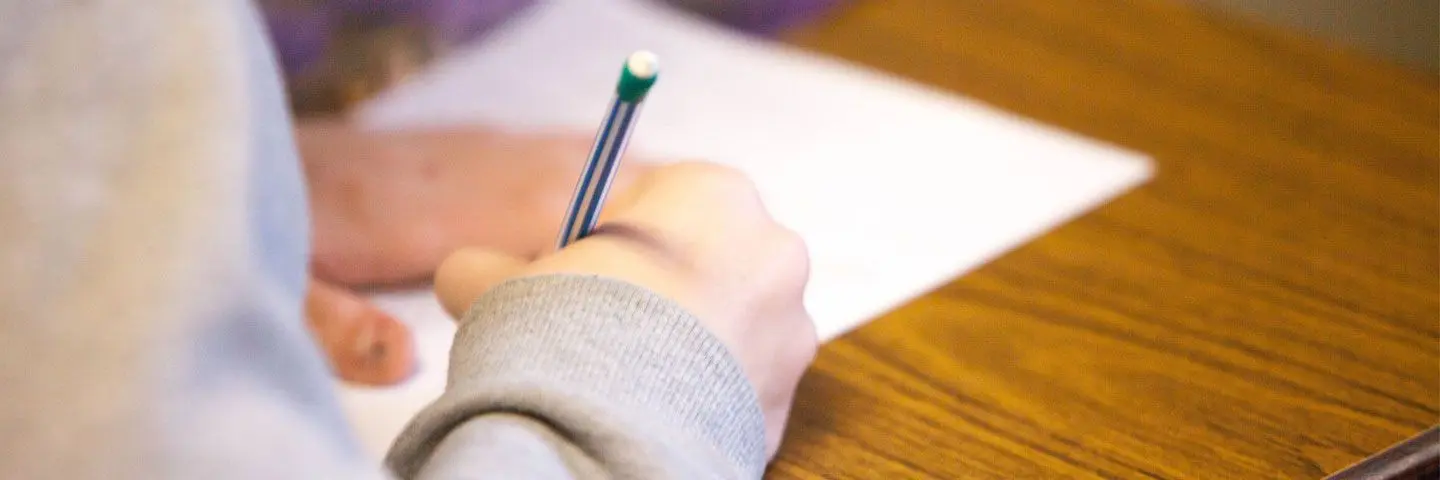Annapolis-based business aims to revamp the college entrance process
08/06/2019| Amanda Winters
Article Topics:
Annapolis-based business aims to revamp the college entrance process
08/06/2019 | Amanda Winters
It’s hard to forget the hours of studying and preparation that goes into taking the SAT or ACT standardized tests. Whether you recently graduated, or you have children or relatives starting to research universities, you know the process of taking college entrance exams can be intimidating, stressful, and exhausting. Still, after nearly 100 years, the SAT is considered the benchmark for students entering the next chapter of their education.
The Classic Learning Test (CLT) is looking to change the century-old process. Administered by the Annapolis-based business Classic Learning Initiatives (CLI), the CLT is a new standardized test that focuses on the most significant contributors to society and culture. It provides passages from some of history’s greatest thinkers and writers, and encourages students to engage with those who have helped shape our world, through reasoning, aptitude, and academia.
The test is now accepted at more than 150 colleges and universities across the globe, and because it is offered online, it provides same-day test results—removing weeks of anxious waiting from the process.
We sat down with Jeremy Tate, CEO of Classic Learning Initiatives, to learn more about this up-and-coming alternative for college entrance exams.
You founded Classic Learning Initiatives in 2015. What inspired you to help provide an alternate test-taking method?
Many people see the SAT and ACT as simply college admissions tests; however, the influence of these tests exceeds college admissions alone. The SAT and ACT are the primary drivers of mainstream curriculum in the U.S. The problem with SAT and ACT’s influence is that both tests ignore subjects that many believe are the most important ones for a well-rounded education.
There are few, if any, passages on these tests that require students to demonstrate their ability to read and understand timeless texts from classic literature, let alone philosophy, religion, or ethics. According to Forbes, ethical literacy is critical for companies to thrive, a component which the SAT and ACT both lack. At CLT, we believe that by offering a new standard, we can drive the humanities back into mainstream education, which ultimately makes for happier citizens and better employees.
How was the test created?
The initial CLT pilot test was created by a 2012 graduate of Harvard University. CLT submitted this first test to several colleges, and once a few colleges adopted—which at the time was purely out of missional alignment—CLT began to market the test to students and families. After a few tests, CLT started accumulating data, which allowed us to calibrate the test for consistency between numerous iterations.
In 2017, CLT began to work with some of the leading psychometric experts in the U.S., two of whom work at the University of Maryland, College Park. In early 2019, after creating more than 20 iterations of the CLT and offering the test to more than 20,000 students, we released our first Technical Report which offers comprehensive insight into the validity and reliability of the test.
How does the CLT differ from the SAT and ACT?
There are three fundamental differences between the CLT and the SAT or ACT.
- First, the CLT is primarily offered online, and therefore provides students with same-day test results. Students and parents love the same-day results CLT offers by being an online test.
- Second, the CLT is more rigorous and better differentiates among high performing students. Due to years of test score inflation, a 35 or 36 on the ACT, or a score above a 1540 on the SAT, is commonplace among applicants to top universities. The CLT includes a range of scores that equate to above-perfect scores on the SAT or ACT, which allows for greater differentiation among students at the top.
- Third, the CLT is far more humanities-focused than the SAT or ACT. On the CLT, students read passages from the greatest thinkers, authors, theologians, and philosophers in world history.
How does the CLT benefit students who might consider themselves poor test-takers?
The CLT is considerably shorter than either the SAT or ACT. Many students who consider themselves poor test-takers have testing accommodations that often include additional time. However, if a student is given double-time on the SAT, that means they are testing for 8 hours! I can’t imagine any student being able to focus for eight hours. The CLT is 120 minutes, which makes the test far more manageable for students.
What about those with creative minds vs. scientific minds?
On the CLT, 25 percent of the reading passages are drawn from science, and the quantitative reasoning portion of the CLT is far more rigorous than either the SAT or ACT. The inclusion and rigor of both science and mathematics makes the CLT a great tool for scientifically-minded students to put their best foot forward. The CLT also has a free-written response section, which allows creative minds to showcase their abilities. CLT does not grade this section; rather, CLT allows students to send this writing sample directly to colleges, keeping the focus on the student’s individual ability.
How many countries accept this exam?
CLT has been administered in more than 20 countries and one of our closest partner colleges, the University de Navarra, is the top private university in Spain. CLT has never focused on international growth, but we are thrilled the test is filling a worldwide need.
Are there any other initiatives of CLI we should know about?
In addition to the CLT, our flagship college entrance exam, we also offer assessments that compete with the PSAT: the CLT10 and CLT8.
The CLT10, designed for 9th and 10th grade students, is our most popular assessment. The CLT8, designed for 7th and 8th grade students, just launched last year, and it has already grown 50 percent.
Learn more about the Classic Learning Test on cltexam.com.
Keep up with the latest.
Sign up for e-mail notifications.
